Power In Your Pocket
The Retro Roadshow is home to a vast collection of small / handheld / pocket-sized computing devices.
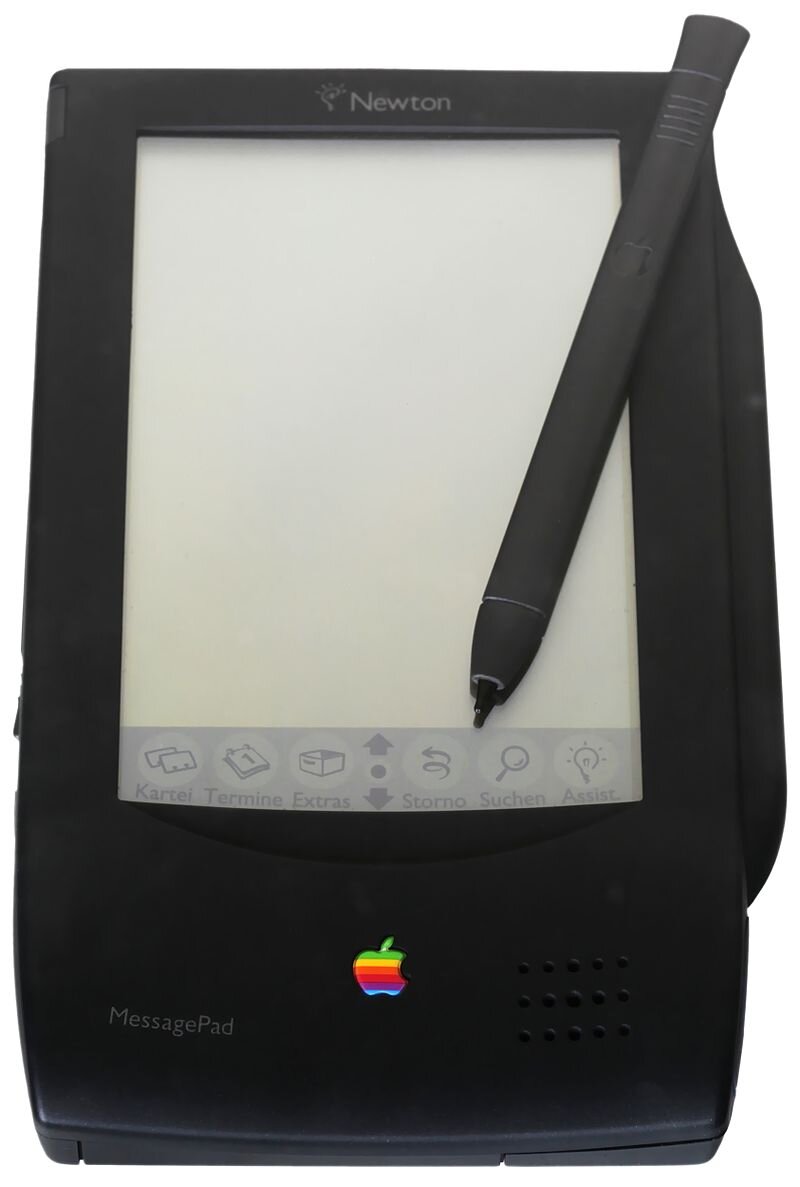
The Apple Newton MessagePad 100 launched in 1993, and essentially defined the emerging "Personal Digital Assistant" market. Designed to be exclusively through a touch-pen interface and incorporating some very forward-thinking concepts, the Newton was incredibly influential. Unfortunately, the first generation of Newton devices were under-powered and included some bugs with the handwriting recognition software (infamously mocked in an episode of The Simpsons, where a bully's note to "Beat up Martin" is recorded as "Eat up Martha"), all resulting in a lackluster product launch. Despite all this, the Newton MessagePad 100 remains an important historical artifact, and The Retro Roadshow is pleased to have one available to attendees.
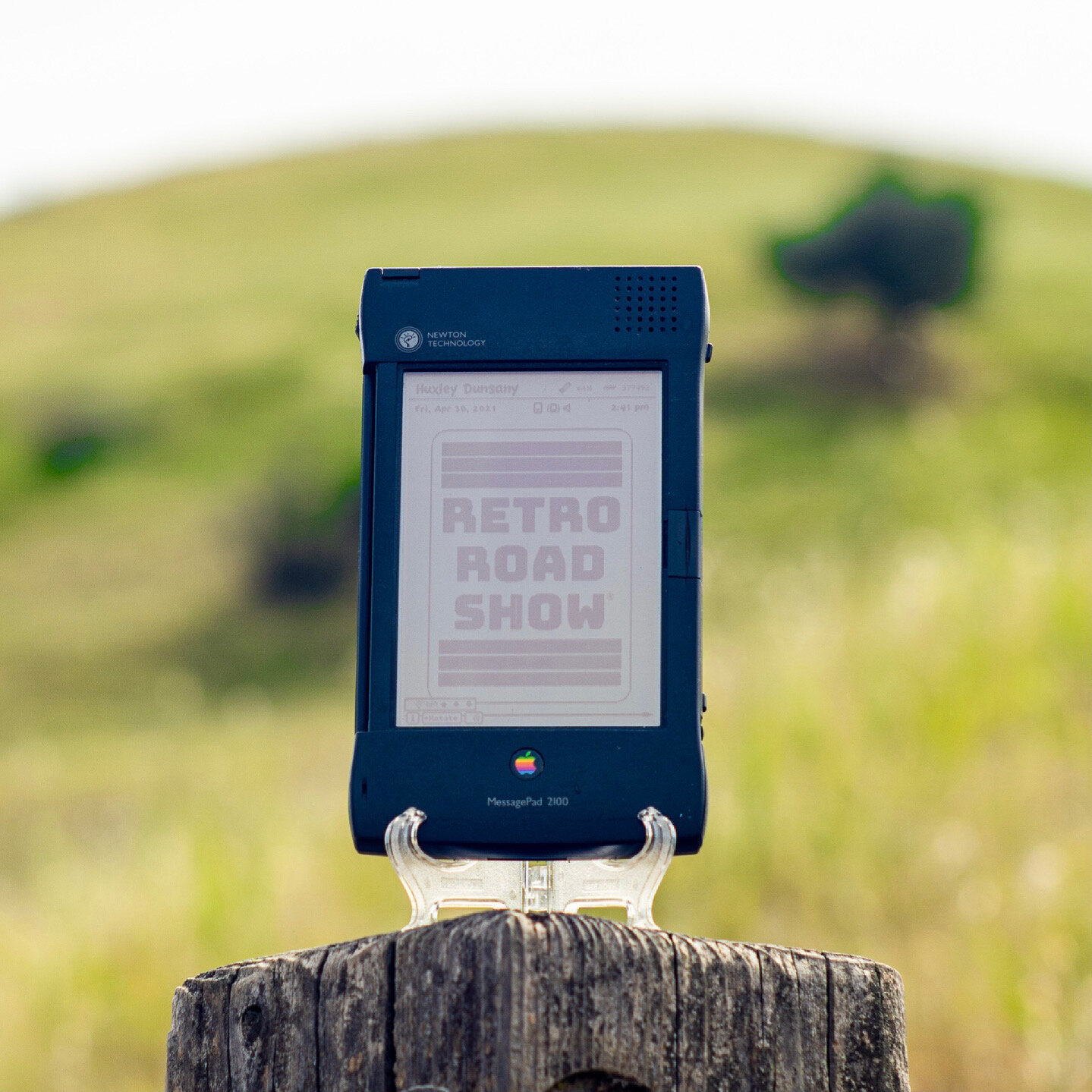
The final entry in Apple's Newton product-line, the Newton MessagePad 2100 was released shortly before Steve Jobs, freshly returned to Apple through their purchase of NeXT and determined to "cut the fat" by canceling any money-losing products, axed the entire Newton business. Nevertheless, the MessagePad 2100 was the ultimate evolution of the Newton platform. Featuring a powerful ARM 610 CPU (the direct ancestor of the "M1" CPU now powering Apple's Mac line) and dual PC-card expansion slots, the 2100 is a robust and powerful pocket computer, capable of dynamically translating handwritten text in realtime, interfacing with WiFi networks, playing MP3 audio, and much more.
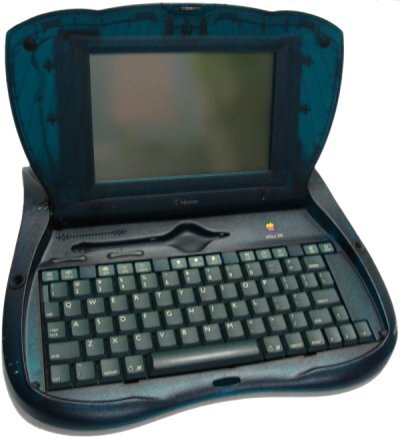
Essentially an experiment that somehow made it to market, the eMate 300 is a bizarrely-loveable oddity in Apple's product history. With a design that can only be described as a mix of a laptop and a jellyfish, with its deep-green translucent shell, large pressure-sensitive display and full-size keyboard the eMate 300 looks like nothing else before or since. Powered by the Newton Operating System, the eMate 300 was primarily designed and marketed to schools, where it was believed that the 28-hour battery life, shock-resistant case and "mistake proof" operating system would appeal to children (and to teachers tired of troubleshooting "normal" computers). While it enjoyed a brief success in the scholastic market, the eMate 300 never quite found its niche, and was discontinued after only a year. Despite all this, the eMate 300 can easily be viewed as a harbinger of several trends which had not yet solidified - the see-through plastics of the iMac (released a year after the eMate was retired), the role that iPads now play in many classrooms, etc.
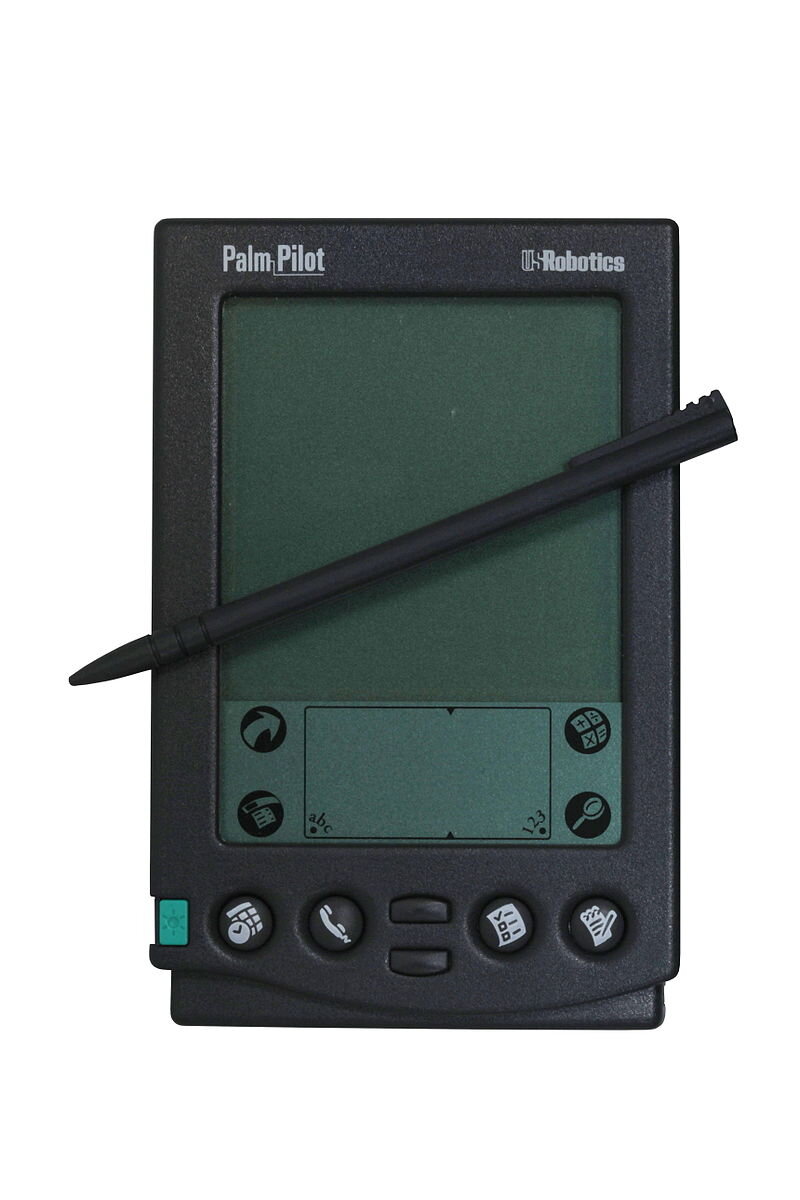
Released in 1996, the Palm Pilot wasn't technically the first mass-market "Personal Digital Assistant" (that honor goes to prior products like the Psion Organiser and the Apple Newton MessagePad 100), but it was the first to get the whole concept right. Small (a fraction of the size of a comparable Newton), able to run for weeks on two inexpensive "AAA" batteries, and loaded with useful software built in, the Palm Pilot was an immediate smash hit.
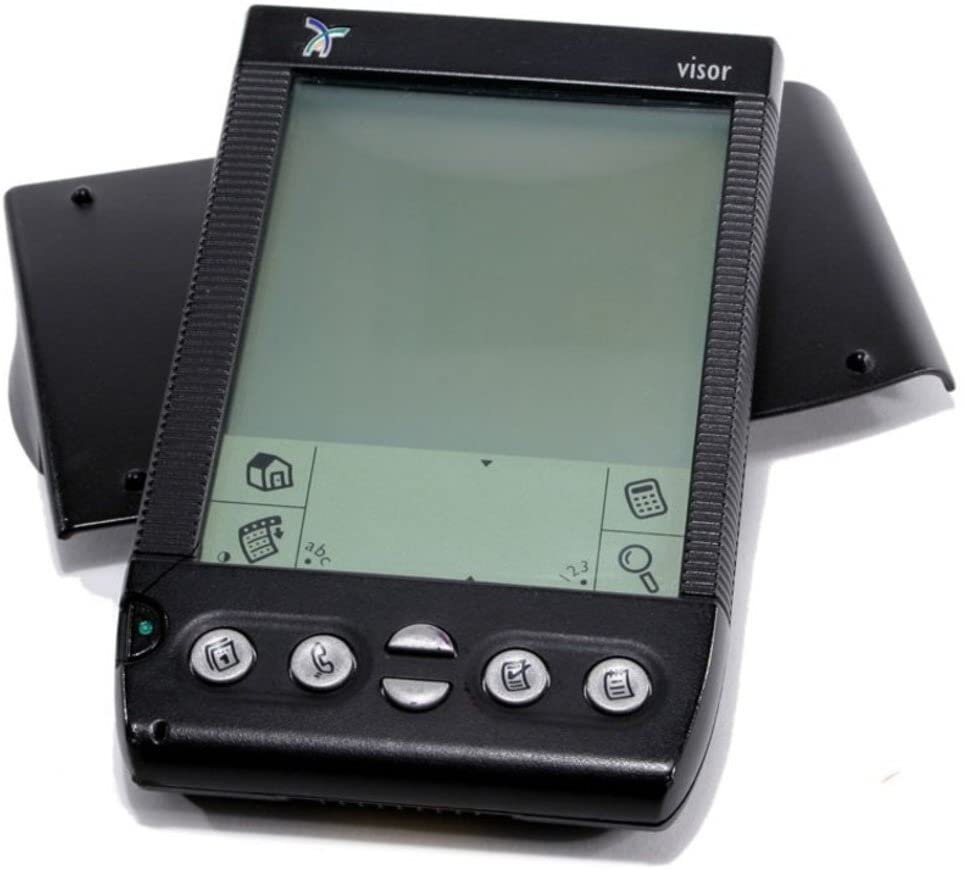
In 1998, several dissatisfied Palm Inc. executives left to form their own company, which they dubbed Handspring. Cleverly skipping the complex work of creating their own operating system, they instead licensed the already-popular Palm OS and built a range of powerful, expandable handheld computers which included major features that Palm themselves weren't yet able to offer, including "SpringBoard" expansion modules to add things like GPS capabilities, MP3 playback, low-resolution digital cameras, etc., and also later offering full-color displays well ahead of any similar offering from Palm itself. The Retro Roadshow is pleased to have several working Handspring devices in our collection, ready for visitors to use.
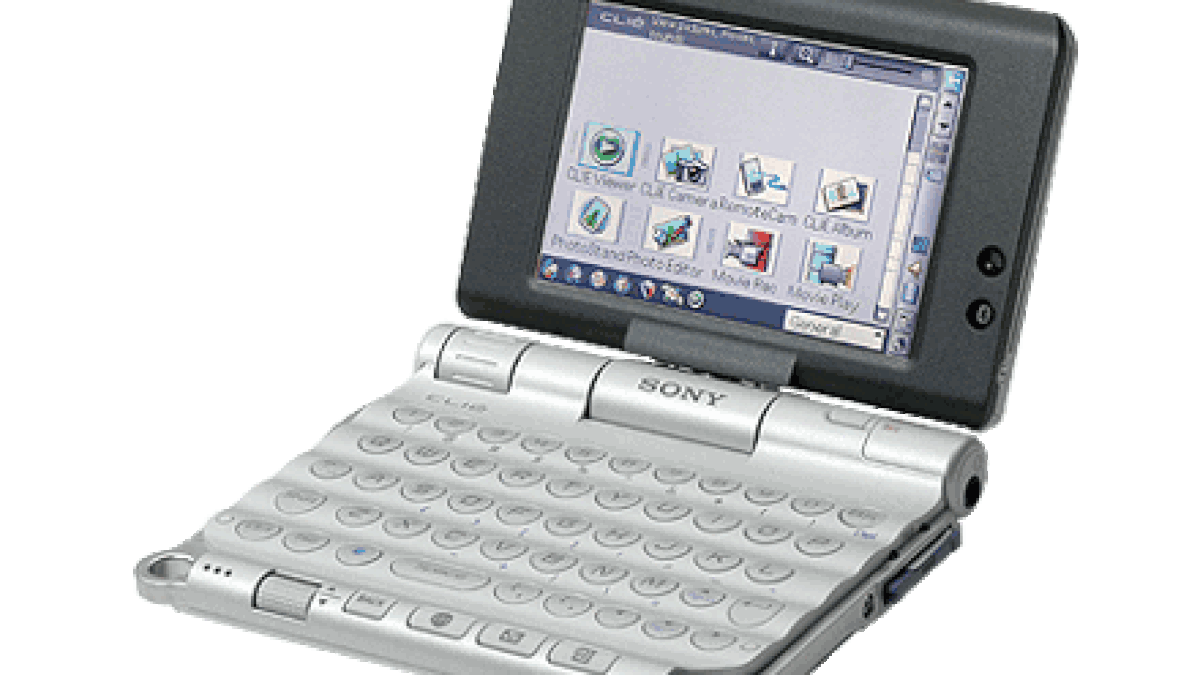
Sony, not wanting to miss out on the exploding "Personal Digital Assistant" market, released a line of handheld computers they called "CLIÉ." Taking a similar approach to Handspring, Sony licensed the Palm Operating System and designed custom hardware to run it, including this adorable tiny "clamshell" unit called the CLIÉ UX50. Packed with bleeding-edge functions like WiFi, Bluetooth, full-color rotating display, handwriting recognition and a tiny "chicklet-style" keyboard, the UX50 still looks futuristic nearly 20 years after it was introduced.
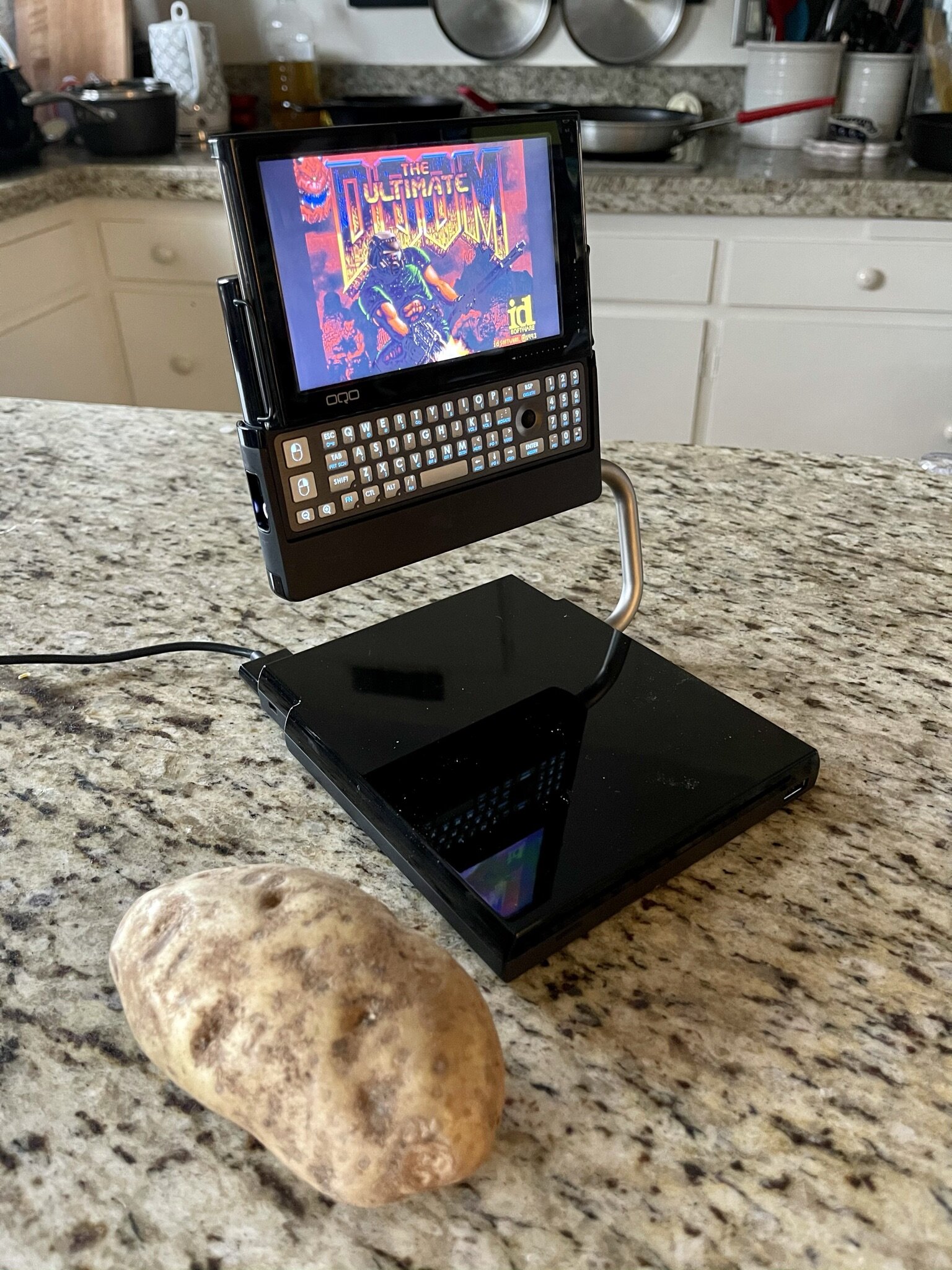
The Retro Roadshow is proud to be in possession of two rare OQO handheld computers, a Model 01 and a Model 02 (pictured here in its 'desktop dock' with a potato for scale). The OQO series were the smallest full-fledged Windows PC's in the world at the time of their release. Featuring a very clever design in which the touch-sensitive screen slides up and down to reveal a backlit physical keyboard, the OQO computers were massively hyped prior to release (Bill Gates himself participated in the first public unveiling), but the general public responded with a resounding "...huh?" Within months of the release of the Model 02, the iPhone was announced and essentially obliterated the already-tiny market for tiny, full-featured computers like this, and the OQO company itself rapidly faded out of existence. Various unresolved design flaws have rendered a large portion of the OQO Model 01's and 02's non-functional, so the Retro Roadshow is especially excited to have working examples of each unit available for attendees to use.
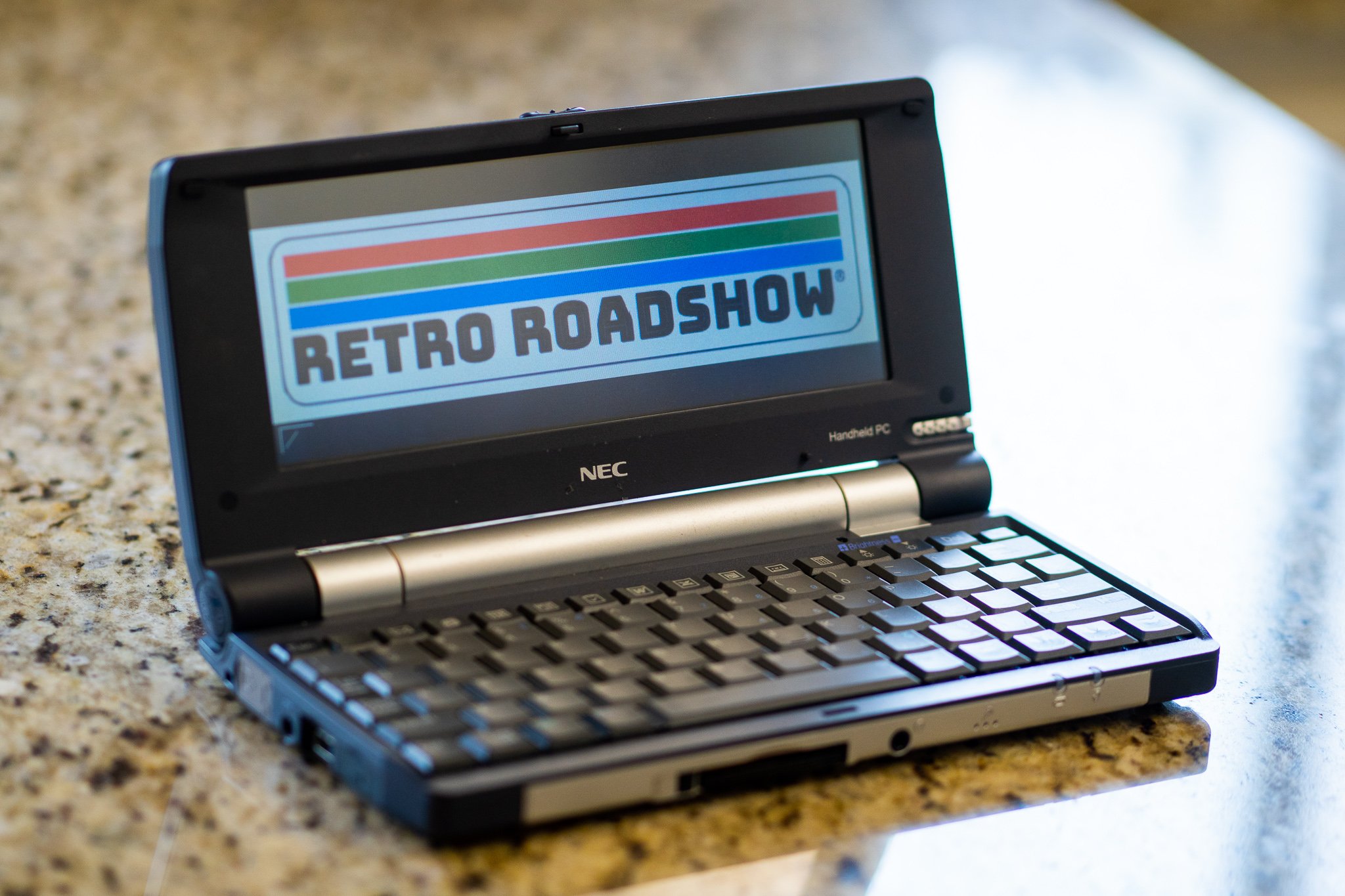
The NEC MobilePro 900 is a quirky device which can be described as either a tiny laptop, or a gigantic PDA. It runs a stripped-down version of Windows, sports a 400MHz Intel CPU, and is surprisingly pleasant to use despite its diminutive keyboard. While it comes pre-loaded with a suite of business-oriented productivity apps, visitors to the Retro Roadshow may find the most enjoyment in using the pop-out stylus and touch-sensitive display to play a rousing game of Solitaire.